Her Majesty Queen Elizabeth II celebrated the seventieth anniversary of her ascent to the throne of the United Kingdom on 6th February 2022. Throughout the year, this platinum anniversary will be celebrated with a series of events by people the length and breadth of the United Kingdom. She provides a measure of constancy in sometimes troubled times and a link with Britain’s past. Apart from a brief period of eleven and half years between 1649 and 1660, when England was ruled as a republic by Oliver Cromwell, the British monarchy has persisted for over a thousand years and enjoys high levels of acceptance and popularity both within these islands and around the world. With that in mind, below are ten facts about Queen Elizabeth II.
The Platinum Club
On 6 February 2022, Elizabeth the Second joins a select club of monarchs who have served for seventy years or more when she celebrates her platinum anniversary as Queen. These include King Louis XIV of France (1643 – 1715), Johann II, Prince of Lichtenstein (1858 – 1929), and Bhumibol, King of Thailand (1927 – 2016). The Queen is the longest ever serving British monarch, having passed the record of Queen Victoria (sixty-three and a half years) in 2015.
Birth
The Queen was born on 21 April 1926 at 17 Bruton Street near Berkeley Square in Mayfair, London. This house belonged to her Scottish maternal grandparents, the Earl and Countess of Strathmore but was demolished as part of the redevelopment of the area (not because of bombing during the Second World War, as is sometimes stated). At the time Elizabeth was the daughter of the Duke and Duchess of York, who were not expected to come to the throne, her father being the younger brother of the Prince of Wales, later King Edward the Eighth. However, when Edward abdicated from the throne in 1936 in order to marry the American divorcee Wallis Simpson, she became the next heir to the throne after her father.
 British Monarchy: Princess Elizabeth aged seven, painted by Philip de László, 1933. Photo Credit: © Public Domain via Wikimedia Commons.
British Monarchy: Princess Elizabeth aged seven, painted by Philip de László, 1933. Photo Credit: © Public Domain via Wikimedia Commons.
Life as a princess
Elizabeth and her sister Margaret never went to school and were both educated at home. They had a governess, Marion Crawford, who worked for her parents and supervised the education of the two young princesses. ‘Crawfie’, as she was known to the family, later wrote a book about the young princesses but was frozen out of the royal family as a result.
Wartime
King George the Sixth was the Monarch during the Second World War when it was suggested that the two princesses should be evacuated to Canada. However, to quash this suggestion, the Queen’s mother stated: ‘The children won’t go without me. I won’t leave without the King. And the King will never leave.’ Instead, the young Princess Elizabeth enrolled in the Auxiliary Territorial Service where she became a subaltern and learned how to service and repair motor vehicles such as army trucks. When the war ended in 1945 she and her sister Margaret surreptitiously mingled with the crowds outside Buckingham Palace.
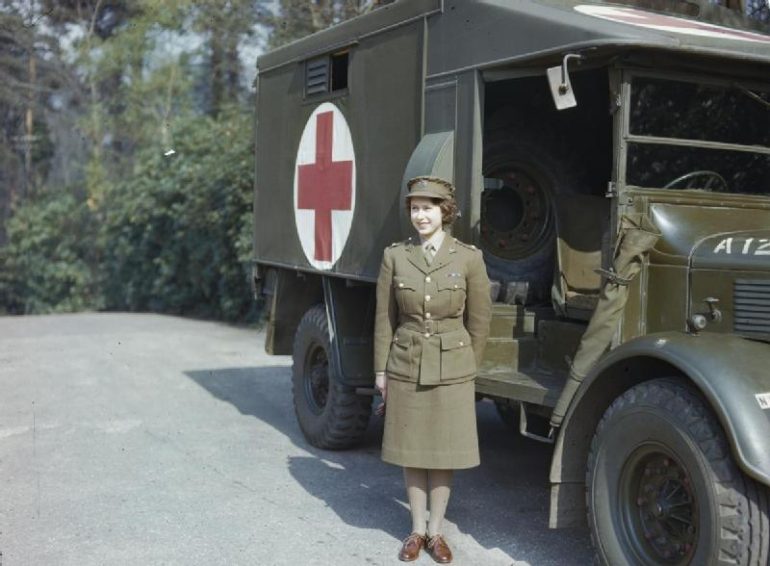 British Monarchy: Princess Elizabeth in Auxiliary Territorial Service uniform, April 1945. Photo Credit: © Public Domain via Wikimedia Commons.
British Monarchy: Princess Elizabeth in Auxiliary Territorial Service uniform, April 1945. Photo Credit: © Public Domain via Wikimedia Commons.
Marriage and family
The Queen met her second cousin Prince Philip when he showed her and Margaret around the Royal Naval College at Dartmouth, where he was being trained, in 1939. She decided that he was ‘the one’ for her and the couple married at Westminster Abbey in 1947. They stayed married for seventy-three years until his death in 2021 at the age of ninety-nine. The couple had four children – Charles, Anne, Andrew, and Edward – eight grandchildren and, at the time of writing, twelve great-grandchildren. Prince Philip was of Greek and Danish origin but he renounced his foreign titles before his marriage to Elizabeth when he also converted to Anglicanism. He smoked his last cigarette the night before his wedding and was given the rank of His Royal Highness and title Duke of Edinburgh on the day itself.
Succeeding Her Father
The Queen came to the throne at the age of twenty-five in 1952 when she was visiting Kenya on the way to a tour of Australia and New Zealand with Prince Philip. The news of the death of her father was broken to her by her husband and the couple immediately returned to the United Kingdom. She was crowned by the head of the Church of England, the Archbishop of Canterbury Geoffrey Fisher at Westminster Abbey on 2 June 1953. The crown and regalia she wore on that day can be viewed at the Tower of London.
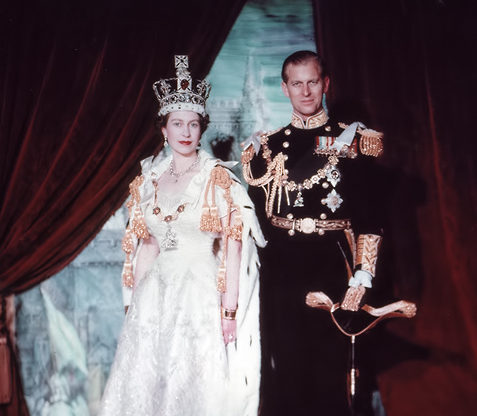 Coronation portrait of Queen Elizabeth II and Prince Philip, June 1953. Photo Credit: Photo Credit: © Public Domain via Wikimedia Commons.
Coronation portrait of Queen Elizabeth II and Prince Philip, June 1953. Photo Credit: Photo Credit: © Public Domain via Wikimedia Commons.
Politics
The Queen has been served by fourteen Prime Ministers of the United Kingdom during her reign, starting with Winston Churchill, including Harolds MacMillan and Wilson, Margaret Thatcher, Tony Blair, and Boris Johnson. Tony Blair has recently been created a Knight of the Garter, an honour often given to former Prime Ministers, and will be installed at Windsor Castle in June 2022. He will be joined by Lady Valerie Amos, the first woman of colour appointed to this ancient order, which was founded at Windsor in 1348. Although the Queen is well-informed about current affairs and meets the Prime Minister once a week when the British parliament is in session, she is one of the few people in Britain who is not able to vote, members of the royal family being considered to be above politics. She is particularly interested in the Commonwealth, the group of nations that previously made up the British Empire, and regularly meets with the heads of state of these countries.
Homes
The Queen has five homes – Buckingham Palace in London, Windsor Castle near Heathrow Airport, Sandringham House in Norfolk, Holyrood Palace in Edinburgh, and Balmoral Castle in the Dee Valley in the Highlands of Scotland. She spends the late summer and early autumn at Balmoral and is based at Windsor in the early summer. If she is in London during the week, she usually goes to Windsor for the weekend. In February the Queen makes her annual pilgrimage to Sandringham for a few weeks in memory of her father, who died there.
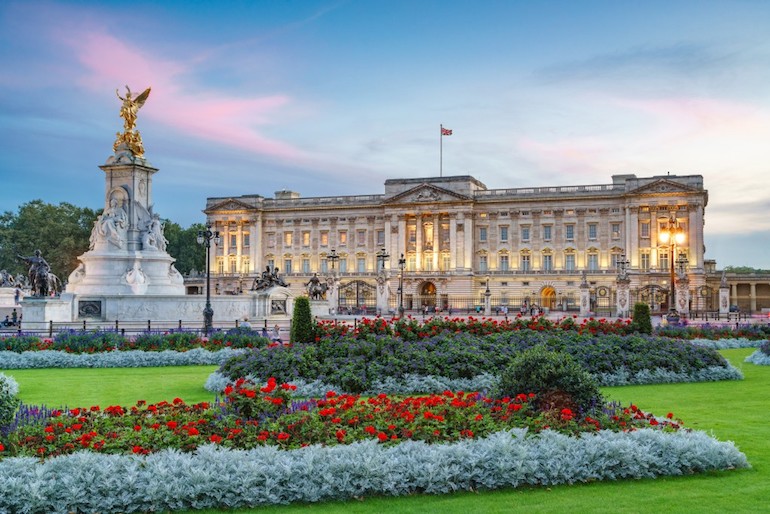 Buckingham Palace in London. Photo Credit: © visitlondon.com/Visit Britain.
Buckingham Palace in London. Photo Credit: © visitlondon.com/Visit Britain.
‘Treebilee’
The Queen has planted over 1500 trees during her reign, including one to commemorate the birth of each of her four children. In October 2021 she planted a copper beech at her Scottish home Balmoral Castle to launch the Queen’s Green Canopy, a national tree-planting initiative to mark her platinum jubilee, which her eldest son Prince Charles has nicknamed ‘The Treebilee.’ A tree canopy in the grounds of Buckingham Palace covers sixty percent of the gardens and provides a sanctuary for birds. There are a hundred London planes in the palace gardens including the tallest one in London, which is twenty-six metres high.
Money
The Queen is thought to be worth around £350 million but is only ranked at number 372 on the Sunday Times Ruch List, which is published every year. She is paid an annual sum by the British government to cover the cost of running the royal household. Originally known as the Civil List, this has been called the Sovereign Grant since 2011. In the year 2021/22 this amounted to £86.3 million. The Queen also receives money from the Duchy of Lancaster (around £18 million a year) while Prince Charles’s annual income of over £20 million pounds a year comes entirely from the Duchy of Cornwall, on which he voluntarily pays income tax at the rate of twenty-five percent. The Sovereign Grant does not include the cost of running all royal events but it amounts to less than £1.50 for every citizen of the United Kingdom.
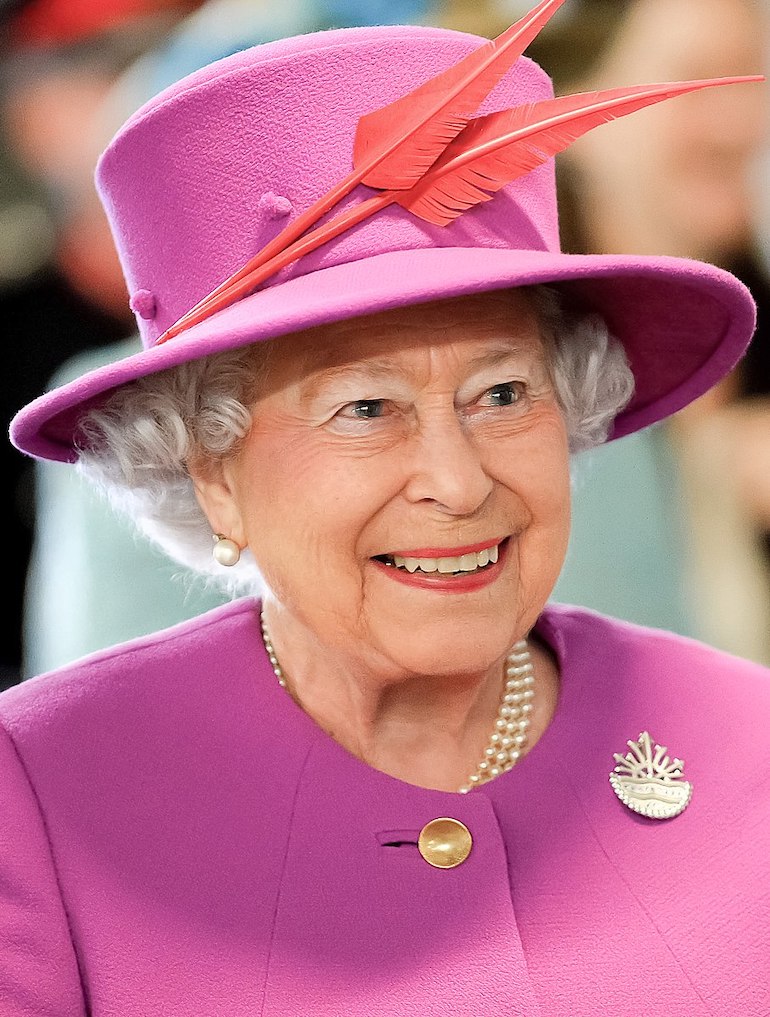 Queen Elizabeth the ll during her 2015 visit to HMS Ocean in Devonport. Photo Credit: © Joel Rouse/ Ministry of Defence via Wikimedia Commons.
Queen Elizabeth the ll during her 2015 visit to HMS Ocean in Devonport. Photo Credit: © Joel Rouse/ Ministry of Defence via Wikimedia Commons.



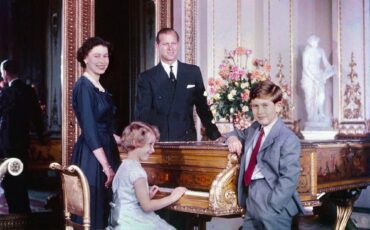
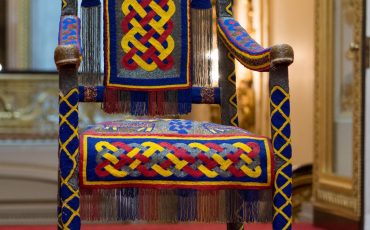


Leave a Reply